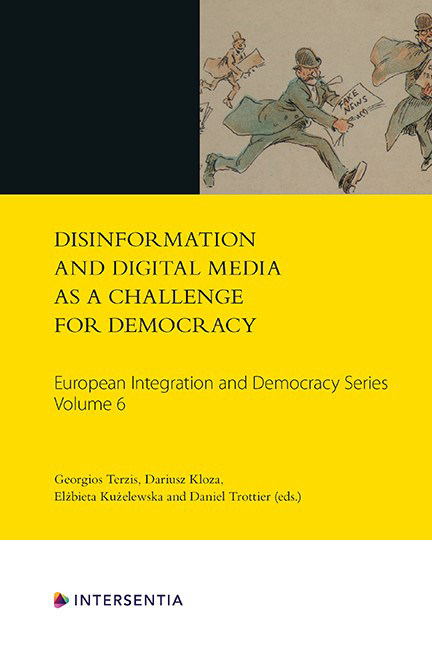Book contents
- Frontmatter
- Foreword: Fooling All of the People All of the Time: Democracy in the Age of Fake News
- Introduction: ‘They All Hear “Ping” at the Same Time’
- Contents
- List of Abbreviations
- List of Contributors
- PART I THEORETICAL APPROACHES TO AND THE CONCEPTUALISATION OF DISINFORMATION
- PART II EXPERIENCE OF DEALING WITH DISINFORMATION
- PART III SOLUTIONS TO DEAL WITH DISINFORMATION AND THEIR CRITIQUE
11 - Disinformation and Fear Propaganda as Justification for the War on Terror During George W. Bush’s Presidency
Published online by Cambridge University Press: 26 May 2021
- Frontmatter
- Foreword: Fooling All of the People All of the Time: Democracy in the Age of Fake News
- Introduction: ‘They All Hear “Ping” at the Same Time’
- Contents
- List of Abbreviations
- List of Contributors
- PART I THEORETICAL APPROACHES TO AND THE CONCEPTUALISATION OF DISINFORMATION
- PART II EXPERIENCE OF DEALING WITH DISINFORMATION
- PART III SOLUTIONS TO DEAL WITH DISINFORMATION AND THEIR CRITIQUE
Summary
INTRODUCTION
After the terrorist attacks of 11 September 2001, there was a peculiar atmosphere of fear, compassion and solidarity with the US, which was meticulously used by the George W. Bush administration to introduce significant changes in US security policy. The US President's administration effectively used traditional media alongside the White House website to disinform and spread propaganda and fear. By using disinformation and fear propaganda in the War on Terror, the Bush administration intended to convince public opinion that all detained and tortured prisoners were dangerous terrorists. Propaganda of intimidation by the White House aimed to divert attention from violations of basic human rights guaranteed by the international community. This chapter will analyse the era of George W. Bush's government, during which the presidential administration used disinformation to try to convince the public that the regime of Saddam Hussein had weapons of mass destruction to justify the start of the American war in Iraq in March 2003, which had no legitimacy in international law. As it turned out, the Bush administration presented false information, disinforming the public. The second tool employed by the Bush administration was the appeal to fear, the purpose of which was to convince the public of a constant threat from terrorists. Through the use of this tool, the Bush administration could introduce new (controversial) regulations – e.g. the Patriot Act, the creation of secret CIA prisons around the world, and the utilisation of enhanced interrogation techniques. Appeal to fear also had a huge impact on the results of the US presidential election in 2004, when George W. Bush ran for re-election and won, despite the fact that public opinion was very divided at the time. The results of the polls showed that more than half of Americans did not trust Bush, yet at the same time, the same percentage of the population expressed acceptance for his presidency. In this chapter, I will try to answer the following research questions: how did the Bush administration use disinformation and fear propaganda?
- Type
- Chapter
- Information
- Disinformation and Digital Media as a Challenge for Democracy , pp. 201 - 216Publisher: IntersentiaPrint publication year: 2020

